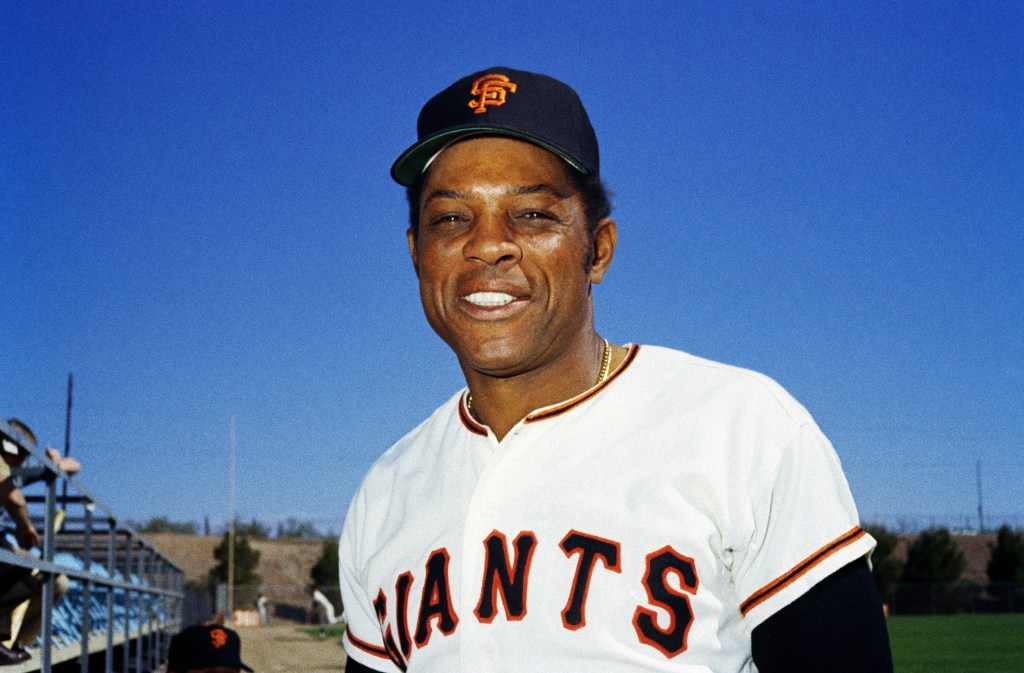Ever since the afternoon of Sept. 29, 1954, the world has been replete with baseball fans who are passionate about telling other baseball fans that Willie Mays — dubbed the “Say Hey Kid” for how he tended to start his sentences — was the greatest ballplayer who ever lived. That’s often how they’ll put it. Not baseball player. Ballplayer.
The occasion was Game 1 of the World Series, pitting the 23-year-old Mays’ New York Giants against the fearsome, 111-win Cleveland Indians in the Polo Grounds, but the eternal event occurred in the eighth inning of the deadlocked contest when Mays put his back to home plate in center field and went off on a dead sprint — which was also like a heroic quest — in pursuit of a rocket hit by Vic Wertz, eventually arriving at the patch of grass where the ball was about to land and catching it over his shoulder at his midsection.
Nor was Mays done. As part of the same motion, he somehow managed to reverse course, spinning his body and sending the ball back towards the infield to stop the runners from advancing.
What became known as “The Catch” is baseball’s defining play. That it was made by a Black man in the middle 1950s makes it a historic play. Prior to Mays’ ascent — codified by The Catch — baseball’s white legends were just that — more than baseball players, as if they had this dual life as veritable feats of narrative. There was Babe Ruth the player, for instance, and Babe Ruth the near-mythical concept who transcended the sport.
Mays was the first African-American about whom the same can be said, and the mercurial nature of his game made him both a ballplayer and more than a ballplayer. He was a force of his own brand of nature.
The impossible was now the very doable, be it in the batter’s box, on the base paths, or out in the field, where Mays appeared to cover more ground than an Old World explorer.
I didn’t grow up with Willie Mays in one sense, and yet in another I did, because we all did. You didn’t need to have watched Willie Mays in order to absorb at least part of what he was about, that beyond-the-confines-of-the-merely-physical quality that he had.
During our backyard summer games of baseball, we imitated the heroes of the day. There was that one kid who was always Darryl Strawberry. But if you made a basket catch, everyone thought of Willie Mays, and none of us had seen him in action.
Willie Mays was narrative. He fired the imagination. He was Casey at the Bat minus the whiff at the dish, and he went beyond color.
Chuck Berry wrote “Brown Eyed Handsome Man” — by which he really meant “Brown Skinned Handsome Man” — which featured a ballplayer who hit a high fly into the stands, and you knew it was Willie Mays.
Were you a racist and you watched Mays play, you were apt to find yourself at a loss as to how to proceed. His era of peak athleticism was the 1950s, a time of sci-fi fare, and it’s easy to imagine a couple of aliens, with some sudsy beers and boxes of Cracker Jack, having descended from the mothership for a day in the bleachers watching Willie Mays and telling their ballpark neighbors, “That’s our guy.”
The Giants moved to San Francisco, and Mays lit up another coast, before he returned to New York for a stint with the New York Mets. It’s always floored me how aggrieved people sound when talking about Mays out in Flushing, as if they were seeing their once-strong father near the end, unable to get himself to the bathroom.
The reason, I think, is because of how these people had experienced Mays previously. He was fine circa 1973 — not outstanding, not the worst. A man playing the game for as long as he wanted to and could stick in the league, in whatever capacity.
Mays himself said that he made better plays than The Catch. That this is both feasible and likely true is why people took their eyes off him as little as possible, because you never knew. Everything was open to possibility. That’s not only baseball, but joy itself.
Willie Mays the man is gone now, but Willie Mays the life force will be making spectacular plays in center field for as long as we’re here. He was about the best there ever was if you saw him, and about the best there ever was if you hadn’t. Now that’s saying something.
Fleming is a writer.
